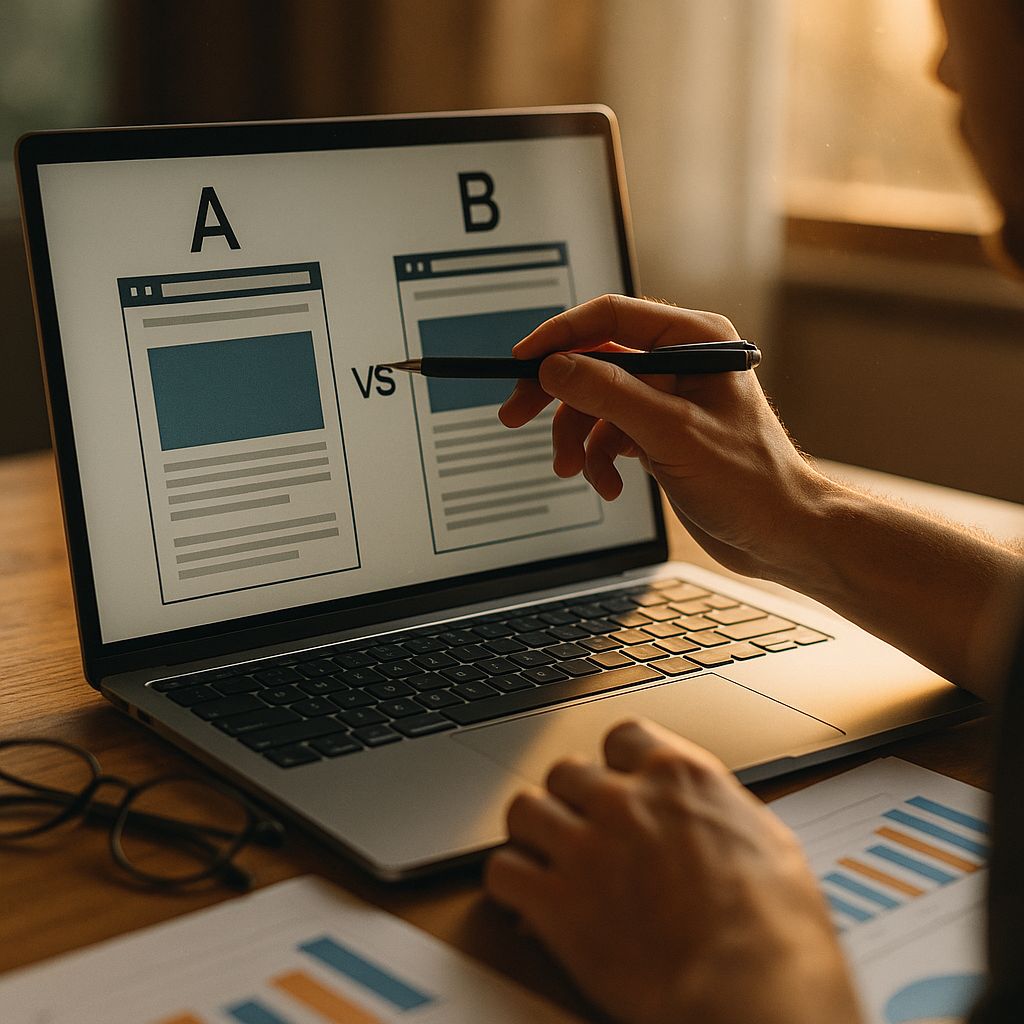Landing page builders with integrated A/B testing features have become indispensable for digital marketers aiming to maximize conversions in 2025. As consumer behavior shifts and competition grows, businesses need effective tools to optimize user experience. In this comprehensive guide, we explore the top benefits, essential features, and best practices of landing page builders with A/B testing—plus how these platforms drive continuous revenue growth.
Why Landing Pages Need Built-In A/B Testing Tools
Landing page builders with A/B testing allow marketers to test multiple versions of a page simultaneously, revealing what resonates best with users. According to HubSpot’s 2024 State of Marketing report, 65% of top-performing campaigns are underpinned by ongoing experimentation. This native integration eliminates guesswork, ensuring every design choice is data-driven. Businesses benefit from faster iterations and effective targeting, fueling higher conversion rates and lower customer acquisition costs.
Key Features to Seek in Landing Page Builders with A/B Testing
The best landing page platforms in 2025 offer more than basic split-testing; they pair robust design tools with advanced analytics. Features to prioritize include:
- Visual Drag-and-Drop Editors: Quick, code-free design adjustments for rapid testing
- Multi-Variant Testing: Beyond A/B, test multiple versions for granular optimization
- Real-Time Analytics Dashboards: Actionable insights to empower swift decision-making
- Audience Segmentation: Deliver tailored experiences based on user behavior or campaign source
- Seamless CRM and Marketing Tool Integrations: Connect with your sales and email platforms effortlessly
- Mobile Responsiveness Checks: Ensure all variants perform flawlessly across devices
Top platforms, such as Unbounce and Instapage, continually update with AI-driven recommendations, making it easier to optimize every aspect of the landing page experience.
How A/B Testing Boosts Conversion Rates and User Experience
A/B testing empowers businesses to move from intuition-driven design to evidence-based decisions. By analyzing user engagement metrics—such as click-through rates, time on page, and bounce rates—brands identify elements that influence conversions. For example, a different call-to-action color or headline could result in a 20% higher conversion rate, as observed by Optimizely’s 2024 industry benchmarks.
Continuous testing also fosters a culture of learning, helping teams adapt messaging to evolving market trends. In 2025, top marketers run at least two landing page experiments each month, dramatically increasing their campaign ROI over competitors who rely on static pages.
Best Practices for Running Successful A/B Tests on Landing Pages
To take full advantage of landing page builders with A/B testing, marketers should adhere to several best practices:
- Set Clear Goals: Define what you want to test—be it form completions, click-throughs, or purchases.
- Test One Variable at a Time: Isolate changes (such as headline text or image placement) to accurately attribute performance boosts.
- Establish Statistical Significance: Allow tests to run until enough data is collected to avoid misleading conclusions.
- Segment Audiences: Analyze results by device, source, or demographic for deeper insight.
- Document Learnings: Record every test and lesson learned to inform future campaign decisions.
Leveraging these strategies ensures continual improvement and sustained growth from landing page campaigns in 2025.
Choosing the Right Landing Page Builder with A/B Testing for Your Business
Selecting the ideal platform depends on your company’s goals, tech stack, and marketing resources. For fast-moving teams, builders like Leadpages offer no-code customization with instant deployment, while larger enterprises might prefer Salesforce’s integration-rich solutions. Always prioritize platforms with transparent pricing, responsive support, and a well-documented roadmap of feature updates.
Seek platforms accredited by leading analysts or peer review sites, verifying they consistently deliver secure, reliable performance at scale. Before committing, trial your top choices and assess how their A/B testing dashboards supplement your marketing workflows.
The Future of Landing Page Optimization: Automation and AI
In 2025, AI-driven landing page builders are setting new benchmarks for efficiency and results. Expect platforms to automate variant creation, suggest winning page elements based on historical data, and deliver predictive analytics. Cutting-edge solutions use machine learning to dynamically serve the highest-converting variant to each visitor in real-time, further improving overall conversion rates and user experience.
As landing page technology evolves, businesses embracing integrated A/B testing and automation will consistently outperform those stuck with manual, one-size-fits-all strategies.
FAQs: Landing Page Builders with Integrated A/B Testing
-
What is A/B testing in the context of landing pages?
A/B testing compares two or more versions of a landing page to determine which performs better at achieving a specified goal, such as signups or sales. Integrated A/B testing tools make it easy to design, launch, and monitor these tests directly within your builder.
-
How do integrated A/B testing tools improve marketing ROI?
Built-in A/B testing helps marketers quickly identify high-performing page variants, reducing wasted ad spend and increasing conversions without extra third-party software or technical complexity.
-
Can small businesses benefit from landing page A/B testing?
Absolutely. Even small businesses see conversion gains by iteratively improving landing pages based on user data. Many solutions offer affordable, easy-to-use A/B testing features designed for startups and SMEs.
-
Do I need coding skills to use these landing page builders?
Most leading landing page builders in 2025 offer intuitive, drag-and-drop interfaces—no coding necessary. You can quickly set up A/B tests and adjust page elements without technical expertise.
-
How long should I run an A/B test on my landing page?
Run your test until you’ve reached statistical significance, which usually requires a few hundred to a few thousand visitors per variant depending on conversion rates. Most platforms help you track significance automatically.
In summary, landing page builders with integrated A/B testing features are critical tools for modern marketers. By leveraging continuous experimentation and automation, you can enhance conversions, optimize user journeys, and keep your business ahead of the competition in 2025’s dynamic digital landscape.
